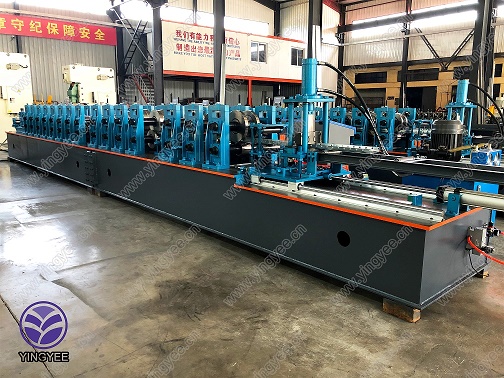
The Evolution and Importance of Keel Roll Forming Machines
In the modern manufacturing landscape, the keel roll forming machine stands out as an essential piece of equipment for producing high-strength and lightweight metal components. This technology has revolutionized the way structural elements are created, particularly in industries such as construction, automotive, and shipbuilding. As the demand for precise and efficient manufacturing processes continues to rise, understanding the significance and functionality of keel roll forming machines becomes increasingly important.
At its core, a keel roll forming machine is designed to convert flat metal sheets into shaped profiles that are commonly used as supporting structures. The process begins with feeding a flat strip of metal into the machine. Through a series of rollers, the metal is gradually shaped and formed into a predetermined profile, which is then cut to specified lengths. This continuous forming process allows for high-volume production with minimal waste, making it an economically viable option for manufacturers.
One of the primary advantages of keel roll forming machines is their ability to produce components with exceptional accuracy and consistency
. The precision of the forming process ensures that each profile meets stringent quality standards, which is crucial in applications where structural integrity is paramount. Additionally, the versatility of these machines allows them to create a wide range of profiles, from simple C and Z sections to more complex designs tailored to specific engineering requirements.
As industries push for more sustainable practices, keel roll forming machines also contribute to reducing material waste. By optimizing the roll forming process, manufacturers can use thinner, lighter materials without compromising the strength of the final product. This aligns with the growing emphasis on resource efficiency and environmentally friendly manufacturing practices.
Moreover, advancements in technology have led to the integration of automation and computer control systems in keel roll forming machines. These innovations not only enhance the efficiency of the production process but also facilitate real-time monitoring and adjustments, ensuring that quality is maintained throughout the manufacturing cycle.
In conclusion, keel roll forming machines play a critical role in the production of high-quality structural components across various industries. Their ability to deliver precision, consistency, and efficiency makes them indispensable in today's competitive manufacturing environment. As technology continues to evolve, the future of keel roll forming machines looks promising, paving the way for even more innovative applications and enhanced manufacturing capabilities.